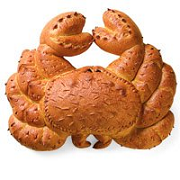|
These are absolutely the crunchiest and tastiest loving peanuts I've ever eaten. A barfly friend brought them to our regular drinking establishment, but he had the regular "salted" version. I just bought the "salt & pepper" variety and man o man they make every other peanut I've eaten seem like a disgusting mealy peanut-sized Peep. Unconditionally recommended. So crunchy. 
|
|
|
|

|
| # ? May 10, 2024 00:52 |
|
Nice nuts OP
|
|
|
|
I dunno man, I've eaten some pretty crunchy peanuts in my time
|
|
|
|
I found some 'Dill Pickle' flavored peanuts recently near me, OP. Frankly I have to tell you - nut quality was good. Good nuts. 'Dill Pickle' flavor? Nada. Could literally not tell they were even flavored. Even had Mrs. Beef test them and she asked if there was a labeling mistake. So not so much with the 'Dill Pickle' flavor if you spot those near you. These look pretty good, but a picture can't convey crunch in anyway. Plus I'm blind and deaf so I can't discern the picture or appreciate it any way you could describe it. Voted 2.
|
|
|
|
you forgot to post your affiliate link op
|
|
|
|
STABASS posted:you forgot to post your affiliate link op Big Peanut
|
|
|
|
I live in the Southwest US, so there's a lot of peanuts in our diet, but they're regarded as common trash nuts. I'm a Cashew and Almond man, myself, so for me to take note of a peanut is significant.
|
|
|
|
I have a severe nut allergy and I would have appreciated a content warning in the thread title OP
|
|
|
|
Very informative thread thank u op
|
|
|
|
Deez nuts
|
|
|
|
The crunchiest loving penis I've ever eaten
|
|
|
|
You convinced me OP I'm going to get really into snacking on peanuts instead of chips after dinner when I'm watching Netflix. What other brands / flavors should I look for?
|
|
|
|
Big Beef City posted:I found some 'Dill Pickle' flavored peanuts recently near me, OP. I've been eating more dill pickle-flavored potato chips lately...I'm starting to really like the sharp, salty flavor. Ditto sunflower seeds.
|
|
|
|
Is there a serious difference between the 1.50 peanuts and the 5.00 peanuts if they're just salted and peppered? It isn't like with vegetables or meat where I can physically see the difference before tasting.
|
|
|
|
OK So has anyone ate a crunchier peanut?
|
|
|
|
https://www.youtube.com/watch?v=S_i7i-ISFLE
|
|
|
|
satanic splash-back posted:Is there a serious difference between the 1.50 peanuts and the 5.00 peanuts if they're just salted and peppered? Virginia peanuts are a different variety and are bigger and crunchier than Spanish peanuts and do taste a lil' different If you've ever gone to a ballpark and gotten peanuts from the vendors roasting them fresh they're probably Virginia peanuts
|
|
|
|
Billy Ray Blowjob posted:OK I haven't tried the ones in the OP but these are pretty drat crunchy 
|
|
|
|
Please post a video of you consuming said nuts to demonstrate the aforementioned opinion based upon the Mohs hardness scale.
|
|
|
|
Mr. Meagles posted:Virginia peanuts are a different variety and are bigger and crunchier than Spanish peanuts and do taste a lil' different Whoa, that's neat. Do they still taste much different boiled?
|
|
|
|
Textural properties are key drivers in food acceptability. Texture in food is perceived through a combination of visual, tactile, kinesthetic and auditory sensations. Crispy and crunchy properties are the main texture attributes affecting acceptability of food with regard to auditory sensations (Roudaut et al. 2002; Szczesniak 2002). Although crispness and crunchiness are commonly used terms in sensory studies, there is little agreement among experts regarding their definitions and evaluation techniques. The association of acoustic sensations with the perception of texture has been studied for crisp, crunchy and crackly foods (Drake 1963; Kapur 1971; Vickers and Bourne 1976; Vickers and Christensen 1980; Vickers and Wasserman 1980; Vickers 1981, 1984a,b, 1985, 1987a,b; Lee et al. 1990; Dacremont et al. 1991; Dacremont 1995; De Belie et al. 2002; Luyten and Van Vliet 2006). The acoustic sensations of a food are affected by the arrangements of cells, chemical bonds, fruit or vegetables maturity and moisture (Al Chakra et al. 1996). The noise production resulting from biting foods is attributed to the rupture of the cell wall. Few to many cells may be rupturing at any point during the mastication process, producing an irregular series of sounds resulting from crushing the cellular structure of foods (Vickers and Bourne 1976). Cellular foods that contain only air within their cells, such as biscuits or chips, are designated dry crisp foods, while foods that contain fluids within their cells, such as fruits and vegetables, are called wet crisp foods. Edmister and Vickers (1985) believed that, although dry crisp and wet crisp foods differ in cellular composition, both foods produce similar auditory cues for crispness perception. Vickers and Bourne (1976) determined that the mechanism of sound production for dry and wet foods is different but that the consumer perception while chewing either food is similar. However, Jowitt (1974), Vickers and Christensen (1980), and Mohamed et al. (1982) suggested that the loudness of panelists' chewing sounds, perception of crispness and/or instrumental crispness determinations may differ between dry and wet crisp foods. The sensory evaluation of crispness, crunchiness and crackliness is very complex. The use of the same descriptor in different studies with trained panelists is not a guarantee that an equivalent sensory perception is observed. For example, “crispy” is used to illustrate the same parameters described by other panelists as “crunchy” (Guraya and Toledo 1996; Brown et al. 1998). Whether crispy and crunchy refer to a similar sensory concept remains unresolved. Vickers (1981, 1985) and Seymour and Hamann (1988) reported a strong positive correlation between crispness and crunchiness, which favors the hypothesis of two descriptors for a unique sensory perception parameter. However, other research suggests that crispy and crunchy refer to different sensory parameters (Dacremont et al. 1991; Dacremont 1995). Vickers (1981) stated that crackliness can be defined as the number of sharp bursts produced when a food is bitten into and can be evaluated using either oral or auditory stimuli. Other researchers have stated that is difficult to differentiate between crunchiness and crackliness based on sound alone and that an oral component is required (Dacremont 1995). Moreover, studies on crispness, crunchiness and crackliness conducted in several countries contribute additional complexities in comparing the results (Roudaut et al. 2002). Descriptive analysis training of panelists for crispness, crunchiness and crackliness evaluation focuses on parameters such as the structure of the intact food, sounds emitted at fracture, the force needed to crush the food, the collapse of the food at fracture and the appearance of pieces observed and perceived following fracture (Roudaut et al. 2002). However, little agreement exists on definitions and techniques of oral manipulation during chewing in determining crispness, crunchiness and crackliness. Depending on the definitions (Tables 1–3), some parameters for crispy, crunchy and crackly foods are emphasized more than others (Roudaut et al. 2002). The descriptive analysis trained panel must receive consistent training in the principles and evaluation methods of crispness, crunchiness and crackliness of foods. Many factors may be responsible for the large variation in crisp, crunchy or crackly sounds: the size, shape and orientation of the food in the mouth; the amount of contact surface between the teeth and the food; the degree to which the mouth is opened; variations within the food; the rate and force of biting; or the way the food breaks down. A properly trained panel will minimize variation (Vickers and Bourne 1976). The appropriate use of auditory textural scales will yield data reproducible among panelists, panels and locations. The reproducibility of the trained panel is related to the establishment of common frames of reference among panelists and panels.
|
|
|
|
Hardawn posted:Textural properties are key drivers in food acceptability. Texture in food is perceived through a combination of visual, tactile, kinesthetic and auditory sensations. Crispy and crunchy properties are the main texture attributes affecting acceptability of food with regard to auditory sensations (Roudaut et al. 2002; Szczesniak 2002). Although crispness and crunchiness are commonly used terms in sensory studies, there is little agreement among experts regarding their definitions and evaluation techniques. hmm, no one cares
|
|
|
|
https://www.youtube.com/watch?v=jzk18CNKRS8
Billy Ray Blowjob fucked around with this message at 17:45 on Mar 29, 2022 |
|
|
|
https://www.youtube.com/watch?v=rM99zRuUTnI&t=20s
|
|
|
|
Crunch my nuts, OP.
|
|
|
|
who loving cares
|
|
|
|
Billy Ray Blowjob posted:who loving cares That's a vintage parachute account, Jeffrey Dahmer
|
|
|
|
Anybody pointed out that “nuts” is also slang for testicles? Cuz that was my fors thought i dunno im pretty crazy
|
|
|
|
I get stop and shop brand siracha extra crunchy peanuts and they're so good drat crunchy
|
|
|
|
edit: wait that timeline doesn't work out
|
|
|
|
I get pulled over for being a peanut and Im just southern italian
|
|
|
|
500excf type r posted:I get stop and shop brand siracha extra crunchy peanuts and they're so good drat crunchy I got a bag of the balsamic ones and they ain’t too shabby either.
|
|
|
|
The Costco blister roasted peanuts are good and crunchy too
|
|
|
|
|
I need to suck on these nuts OP, do they come in a big box?
|
|
|
|
* pissing on my own nuts * Ok, this is cool now?
|
|
|
|
https://www.youtube.com/watch?v=pOpz_3O5Lho
|
|
|
|
Send me the nuts!
|
|
|
|
Hardawn posted:Textural properties are key drivers in food acceptability. Texture in food is perceived through a combination of visual, tactile, kinesthetic and auditory sensations. Crispy and crunchy properties are the main texture attributes affecting acceptability of food with regard to auditory sensations (Roudaut et al. 2002; Szczesniak 2002). Although crispness and crunchiness are commonly used terms in sensory studies, there is little agreement among experts regarding their definitions and evaluation techniques. with my wife being a food scientist, I've seen way to drat much of exactly this kind of thing. There's whole laws about what you can label and call things like 'crunchy' vs 'crackling' and where and why (not exactly those phrases maybe but just as thinly separated). There are entire text books written on specific topics like this and people (like her) do real-rear end old-school wear-a-lab-coat-mix-things-in-beakers-and-use-bunson-burners style lab work to determine this crap. It's incredibly weird and wildly specific things to study. In this, where they talk about difficulty in determining how to classify the sensation as one or the other, especially in other countries, I've learned that often it's due to translation issues, or simply because it's found out that some languages simply do not have a word or the ability to express any difference between them, and so it's a nearly impossible thing to ask them. Like, let's pretend you're on planet Alpha, and you say that to describe a bunch of celery being broken in half, you use the word "Crunchy" and the sound of ice shattering as 'crackling', and they just look at you confused and say "There is no difference, we call both 'blaab'. We do not hear a difference." That's an actual challenge that these types of researchers face. It's funny to see it written about stuff that isn't in her field, since that's really the only thing I'd ever been exposed to, but I guess obviously it has to be done for drat near everything at some point. Mr. Peanut should probably respectfully be referred to by his proper title of Dr. Peanut, given his field work and the citations he receives. Big Beef City fucked around with this message at 20:34 on Mar 29, 2022 |
|
|
|
Oh hell yeah. Virginia peanuts are a class above. Like an Idaho potato, other spuds are fine but those are next level.
|
|
|
|

|
| # ? May 10, 2024 00:52 |
|
Ever get one of those soft, bitter almonds/pistachios while snacking and just want to barf?
|
|
|



































